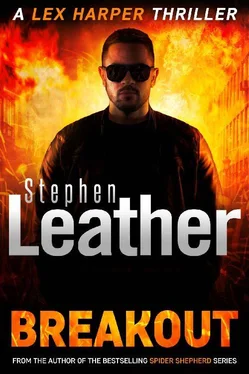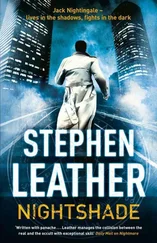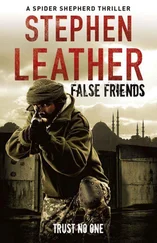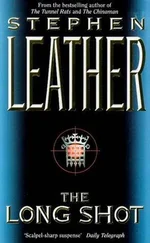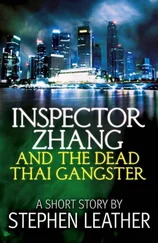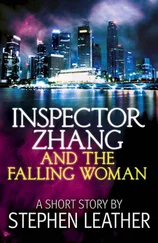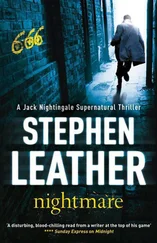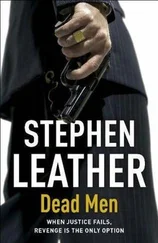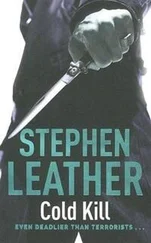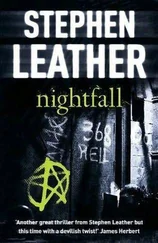Harper laughed. ‘Sounds more like a private club than a prison.’
‘That’s not far from the truth. Colombia’s Vice President once did time in La Posta for cocaine trafficking and the former President of Bolivia’s biggest bank is still an inmate.’
‘What did he do?’
‘He defrauded thousands of investors and robbed many more of their pensions. Rich inmates like the banker and the cocaine kings own all the businesses here. They provide the money to set them up and take most of the profits in return. And as well as the bars, cafés, barbers and shops, there are small factories making toys, clothes and souvenirs for tourists, a forge that turns scrap metal into pots and pans, and a cocaine lab that not only supplies the junkies inside the prison but La Paz and beyond as well. Most people here take coca paste - it’s green coloured and the last stage of the process before it’s refined into pure cocaine. They smoke it using pipes made from the silver paper inside cigarette packets, or you can snort powder cocaine if you can afford it. You can buy any drug you want here, from marijuana to crack and methamphetamine and the prices are so cheap that San Pedro supplies the whole city as well as the prison. Dealing is so common, it’s just called negocios - business - and in fact, just like everybody tells you, cocaine from San Pedro really is the best you can buy. Try some if you want, everyone sells it.’
‘No thanks,’ Harper said, ‘I’ll take your word for it. Anyway, it doesn’t sound like La Posta would be the place to look for Scouse. I’m pretty sure he doesn’t have the money and he certainly doesn’t have the social airs and graces. What about the other sections?’
‘We can try them all until we find him,’ said Ricardo. ‘ Pinos and Alamos are the next most affluent. Like La Posta , they bar any visitors after dark - the time when most beatings and stabbings happen. The other sections are San Martin, Prefectura, Palmar, Guanay and Cancha . As you go down the scale, the cells become smaller and have more occupants - it’s not unusual to find six, seven or even eight men sharing a cell meant for one person. The last two sections, Guanay and Cancha , are definitely the worst. If you’ve no money and no protection, that’s where you’ll end up.’
They passed through Pinos - named for the old pine tree that grew in a small courtyard. It was lavishly equipped with two bars, two restaurants, a small soccer pitch, a billiard room and a copy shop with a geriatric looking printer and photocopier. Next was the Alamos section but neither there nor in Pinos was there any sign of Scouse. Ricardo asked some of the men they saw if they knew anything about a gringo prisoner, but all shook their heads.
The remaining five sections housed the poorer prisoners. They were connected by a warren of passages, tunnels, yards and stairways which made it hard to tell where one section ended and another began. There were lights at intervals along the passageways but most were smashed or the bulbs were missing, making each one dark and forbidding-looking. As they came out of a passage into the next courtyard, Harper stopped and stared in disbelief at a group of small children playing in the dirt at the centre of the yard. ‘There are children in here too?’
‘Sure, when a man is sent to San Pedro, his family often come and live with him,’ said Lupa. ‘They’re safer in here than out on the streets and if he was the only breadwinner, they may have no other option. They’re free to come and go; there are two nurseries inside the walls but children often go out to schools in the surrounding area in the morning and come back to the prison to sleep, while their mothers bring food and other goods in and often run the market stalls here. Some children are even born in here and live the whole of their childhood inside the prison.’
‘But there must be all sorts of lowlifes here - murderers, rapists, paedophiles - how can prisoners keep their kids safe?’
Ricardo shrugged. ‘In other jails sex offenders are kept in separate wings and protected by the authorities. There is no protection for them here, so paedophiles sent to San Pedro just don’t survive, because as soon as they arrive, they’re given justicia communitaria - community justice.’
‘Meaning?’
Ricardo grinned. ‘They’re stabbed or sometimes drowned in la piscina .’
‘ La piscina ? There’s a swimming pool?’
‘It’s called that but it’s really just a small plunge pool, and believe me, you really wouldn’t want to swim in it, though some of the children do. There are a few other sex criminals here. They’re not well-treated as it is, but they know that if they attacked one of the children or a prisoner’s wife or girlfriend, they’d be dead by nightfall.’
A sign on the wall announced that they were now in the San Martin section. A statue of the saint stood in the centre of the yard, with carefully tended flowers growing from its plinth. Washing was strung on lines across the yard, and draped over the wooden balcony at first floor levels. The blue plaster on the courtyard walls looked newly painted and there were neat tables and chairs outside the bar and cantina in one corner. A few prisoners sat on benches against the walls or leafed through the second-hand clothing on a market stall run by an Aymara woman. Behind the statue of the saint was a circular opening a couple of metres across, filled with water. ‘Is that the pool you mentioned?’ Harper said.
Ricardo nodded. ‘It’s also the well that provides the water for the prison.’
A queue of men was waiting to use a payphone fixed to the wall and presided over by a heavy-set prisoner who was extracting a fee of a few Bolivianos from each user, in addition to the coins they had to put in the slot. ‘Presumably mobile phones are banned?’ Harper said.
Ricardo laughed. ‘They are, but prisoners who can afford the bribes all have one - you can’t traffic cocaine if you don’t have a mobile phone.’
There was again no sign of Scouse in the yard or in the cells opening off the passageways through the section, and they moved on, exploring two more sections without result. In each courtyard there was a café and one or more shops, and at least one room where prisoners were shooting pool or playing cards or chess. There were also a couple of weight rooms where massive guys were adding even more muscle, pumping iron with a variety of improvised weights.
The cells surrounding the yards contained not only bedding and personal possessions but also an astonishing range of cottage industries: wood- and metal-workers, men making toys, kites, ceramics, figurines, paper flowers and tourist souvenirs including scale models of San Pedro, and artists painting sketches of prison life. There was a bakery, a shoeshine stand, a laundry and even a hardware store. As Harper peered into it, he burst out laughing. ‘They sell hacksaws? This must be the only prison in the world that sells prisoners the tools they need to escape!’
In one cell three prisoners were hunched over new-looking Singer sewing machines making clothes. Ricardo smiled and waved to one of them. ‘He’s the boss of the workshop,’ he said. ‘He’s learned to be a tailor while he’s been in here and he makes fine suits for some of La Paz’s politicians and wealthy men.’
‘Arranging fittings must be tricky,’ Harper said with a grin.
‘Not at all. He makes the clothes in here, but for a bribe, the guards let him out on day release. He advertises for clients, rents a hotel room for the day to measure his new customers and do fittings for existing ones, and then comes back to San Pedro before curfew.’
Читать дальше
